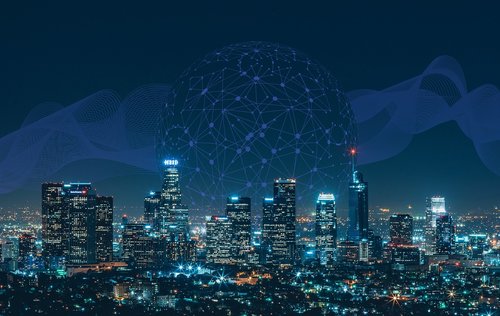
Cities all over the world are becoming intelligent ecosystems where technology collides with life of its inhabitants. While people often consider smart traffic systems or IoT sensors, one unconsidered and potentially revolutionary component of urban mobility is elevators.
Elevators are complex technologies seamlessly integrated with buildings energy management systems to achieve energy savings and efficiency. This blog will review how connected elevators are, and will be, key building blocks of tomorrow’s smart cities.
Understand Connected Elevators
Modern connected elevators are an important shift from traditional mechanical systems. These intelligent platforms are equipped with sensors, AI algorithms, and cloud connectivity. Traditional elevators work independently and only respond to push buttons.
Today’s smart systems integrate AI-powered object detection using advanced models like YOLO to monitor passenger flow and optimize routing. They collect real-time data on motor temperature, door cycles, and building usage patterns.
What makes these systems truly connected is their ability to communicate with building management systems, emergency services, and infrastructure networks throughout the city. They adjust lighting based on occupancy and coordinate with HVAC systems for maximum efficiency.
Role in Smart Cities
Connected elevators operate multiple functions within smart city frameworks, which act as data collection points and efficiency optimizations. These systems improve operational efficiency by about 15% compared to traditional controls. Characteristics such as regenerative drives capture energy during braking and feed it back into the building’s power grid, and support urban sustainability objectives.
With over 1.6 million pieces of connected equipment generating real-time data, these systems provide insights into the building usage patterns and maintenance needs. This information helps urban planners to make informed infrastructure decisions.
Smart elevators also integrate with emergency management systems, enabling coordinated responses during crises. They receive priority commands to facilitate evacuation or restrict access as needed, while predictive maintenance reduces downtime.
Real-World Applications and Impact
The impact of connected elevators extends beyond individual buildings, creating measurable benefits for urban ecosystems.
- Energy Efficiency: Real-world implementations demonstrate impressive environmental benefits. A test building achieved energy use reductions of up to 36% compared to non-optimized buildings, saving €50,000 annually while reducing CO2 emissions by 140 tons. These results showcase the important contribution smart elevators make to citywide sustainability goals.
- Improved User Experience: Modern elevator systems have dramatically changed the everyday experience of getting from one place to another with technology, including smartphone integration and contactless interface options. Users can call for an elevator through mobile apps, receive real-time notices as to how many minutes until an elevator arrives, and navigate buildings without ever pushing a button.
- Predictive Intelligence: Elevator usage data now serves multiple purposes beyond transportation. This helps restaurants predict dining flow patterns to reduce food waste, assists facilities managers in planning maintenance activities during optimal times, and provides building owners with detailed occupancy analytics for space optimization.
Conclusion
Connected elevators have developed from basic transportation systems to intelligent system designs, active participants in smart urban infrastructure. With AI connections, predictive maintenance, and continuous connectivity, they improve efficiency, sustainability, and quality of life in urban communities.
As urban areas embrace digital transformation, smart systems will have an increasing presence and influence.

